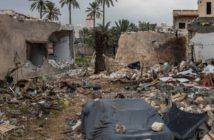Eurasia Review
By: Eurasia Review
By Daniel Wagner and Giorgio Cafiero
To date, only presidents have fallen from power during the Arab Awakening — no king has fallen from his throne. Arab monarchies are of course not immune to the forces that brought down some of their republican counterparts, so why have they all thus far survived? It is a commonly held belief that the Arab world’s monarchs are more legitimate than presidents because of their claim to be direct descendents of the Prophet Mohammed. Some Muslims are therefore more accepting of monarchs than presidents, and many Arab citizens ruled by monarchs are emotionally connected to their rulers and admire them profoundly, even though basic freedoms are restricted in all Arab monarchies.
One year before the Awakening began, Freedom House ranked one monarchy (Saudi Arabia) and two republics (Libya and Syria) as the three most repressive Arab states. One monarchy (Kuwait) and one republic (Lebanon) were ranked the most free (in the “partly free” category), while five monarchies (Bahrain, Jordan, Oman, Qatar and UAE) and four republics (Algeria, Egypt, Iraq and Yemen) were ranked equally “not free.”
 The 2013 Freedom House report noted that during 2012, political freedom and civil liberties improved in only three Arab countries — Egypt, Libya and Tunisia — all republics. At the same time, the level of freedom in four monarchies (Jordan, Kuwait, Oman and UAE) and three republics (Iraq, Lebanon and Syria) declined. These rankings do not indicate that monarchies are less authoritarian than republics in the Arab world, but they do appear to indicate that rising aspirations for freedom in the region have generally been met by a rise in repression.
The 2013 Freedom House report noted that during 2012, political freedom and civil liberties improved in only three Arab countries — Egypt, Libya and Tunisia — all republics. At the same time, the level of freedom in four monarchies (Jordan, Kuwait, Oman and UAE) and three republics (Iraq, Lebanon and Syria) declined. These rankings do not indicate that monarchies are less authoritarian than republics in the Arab world, but they do appear to indicate that rising aspirations for freedom in the region have generally been met by a rise in repression.
Some analysts posit that Gulf Arabs are by nature tribal and apolitical, lacking inherent interest in challenging their rulers’ authority. Yet over the past two years, political dissent has translated into mass mobilization in Bahrain, Kuwait, Oman and Saudi Arabia. Large anti-government demonstrations have been absent in only two Arab countries during the last two years — Qatar and the U.A.E. Given the mass mobilization and vocal political dissent that has taken place in the other four Gulf Cooperation Council (GCC) states, there is no reason to conclude that these two countries have not experienced any uprising due to the nature of Arab monarchism, or the region’s political culture.
These two emirates’ high GDPs per capita (the two highest in the entire Arab world) do more to explain the absence of any mass mobilization of dissenting voices over the past two years. Doha and Abu Dhabi’s ability to effectively distribute petro-wealth among their citizens has more likely successfully purchased political acquiescence over the last two years. The same may certainly be said of Saudi Arabia.
Apart from Libya, no Arab state with substantial hydrocarbon wealth has fallen during the last two years. In the case of Libya, it was the intervention by NATO that tipped the balance against Gaddafi. In the absence of that, Gaddafi may well have survived. As for Jordan and Morocco, we attribute their resilience to the introduction of political reforms early on in the process. While most observers concur that reforms took little to no power away from the regimes, the implementation of these reforms created a perception within both countries that it was best to achieve reform by working within the system. The billions of dollars in aid that the GCC provided to the Hashemite Kingdom also made a difference in terms of giving King Abdullah more room to maneuver.
That said, the events of the last three months in Jordan provide ample reason to believe that King Abdullah may be the first Arab monarch to be dethroned as a result of the Awakening. The unprecedented size of anti-regime protests and the direct calls for the king’s resignation indicate that political dissent in the Hashemite Kingdom may be completely beyond Abdullah’s ability to control. Only time will tell for certain, but it does indeed appear that the king’s rule is at risk.
Although far fewer than 20 percent of Egyptians or Tunisians took their grievances to the streets in January 2011, their presidents fell, while Bahrain’s King Khalifa retains power two years later — even though at least 20 percent of Bahrain’s population participated in anti-regime demonstrations. No one can argue that the Bahraini regime’s survival is attributable to the benevolence of its monarchical system or widespread belief in its legitimacy. Instead, Bahrain’s petro-wealth was used to increase its support among the nation’s Sunni-minority, while the security forces of neighboring Saudi Arabia, Kuwait and the U.A.E. were used to oppress Shi’ite demonstrations. If ‘King’ Khalifa were instead ‘President’ Khalifa, it is reasonable to conclude that Bahrain’s ownership of hydrocarbon resources, and its geographic proximity and political alliance with Saudi Arabia, would have ensured the regime’s survival just as easily.
Given that six of the eight Arab monarch states are endowed with massive natural resource wealth, their ability to distribute patronage to their citizenry has surely impacted their longevity. But with a youthful population, largely educated abroad and linked into the rest of the world via social media, the Gulf monarchs must enact bold reforms if they are to survive. Moreover, certain Arab states’ oil reserves are being quickly depleted, limiting their future ability to ‘buy off’ their citizens.
Time is clearly not on the side of any regime in the Arab world that chooses to ignore such long-term dilemmas. By keeping domestic problems from reaching a tipping point, certain Arab regimes have managed to contain their citizens’ rage effectively. However, youth unemployment and skyrocketing living costs can only go so high before the monarchs’ legitimacy is lost. Conditions in several kingdoms suggest that the tipping point may not be too far away.
Morocco’s declining GDP growth — due in part to decreased tourism and overseas remittances – does not bode well for Rabat. The fact that 49 percent of Moroccan youth are unemployed and not enrolled in school is a troubling reality for this highly illiterate country. Last November, the Jordanian government announced a reduction in fuel subsidies, which was met with widespread protests, several of which turned violent. Although the Saudi regime has increased spending on social programs by several hundred billion dollars, and nearly 200,000 of its youths have studied abroad in the last decade (mostly in the United States), few believe they will find jobs upon return to the Kingdom. Many analysts contend that the unrest among the Shi’ite minority in eastern Saudi Arabia is merely a time bomb waiting to explode, and certainly one with immense geopolitical implications given the proportion of Saudi Arabia’s oil reserves existing in the east.
These three kingdoms’ foreign policies have also played a unique role in their Arab Awakening experiences. After France lost its Tunisian ally and the U.S. lost its Egyptian ally, Moroccan King Mohammed VI knew that he would face minimal pressure from Western governments to democratize or improve human rights. Jordan’s King Abdullah has also benefited from his kingdom’s alliances and proximity to foreign conflicts. Some pro-democracy activists in Jordan have been undermined, given that many Jordanians remain loyal to the regime, due to its capacity to shield Jordanians from the turmoil on its borders. As Jordan plays an integral role in the U.S./Israel/Saudi axis, King Abdullah is surely counting on the West and Gulf monarchies to help keep his regime alive.
Likewise, as Saudi Arabia attempts to contain Iranian influence in the region, its approach to foreign policy has also contributed to the monarchy’s longevity. By linking the Shi’ite protests in Qatif (in the Kingdom’s Eastern province) with Iran’s hegemonic aspirations, the monarchy has effectively used the ancient Arab-Persian rivalry to undermine Saudi Shi’ites’ demands for equality under the law. Moreover, Saudi Arabia is carefully balancing it allegiances between the U.S. and China, so as to keep its options for future maneuverability open.
Looking ahead, a gloomy outlook seems justified. The countries where rulers have either lost or are in the process of losing power have experienced militant tribalism, sectarian strife, declining economic conditions and the rise of Islamists whose commitment to democracy is at best questionable. In Arab countries where the regimes have survived the Awakening, human rights conditions have worsened. In Morocco, where the King’s “democratic reforms” have earned him much adulation from Western governments, a rise in reported cases of torture has been documented by the United Nations.
In the near term, we forecast that the Arab Awakening stands a better than 50/50 chance of slowly spinning out of control, characterized by a combination of a widening gap between citizens’ expectations and governments’ ability to deliver basic societal needs, deteriorating economic conditions, rising social tension, increasing political violence, and regional turmoil driven by the spillover effects of Syria’s insurgency, the Israeli-Palestinian conflict, and the looming possibility of war between Israel/the U.S. and Iran. If the region’s monarchies fail to address the high rates of unemployment and increasing costs of living, there is every reason to expect a tipping point to be reached. Once that occurs, all bets are off for a continuation of the Arab monarchies.
Daniel Wagner is CEO of Country Risk Solutions, a cross-border risk management firm based in Connecticut, and author of the book “Managing Country Risk”. Giorgio Cafiero is a research analyst with CRS based in Washington.
This article appeared at Huffington Post and is reprinted with permission.
.






